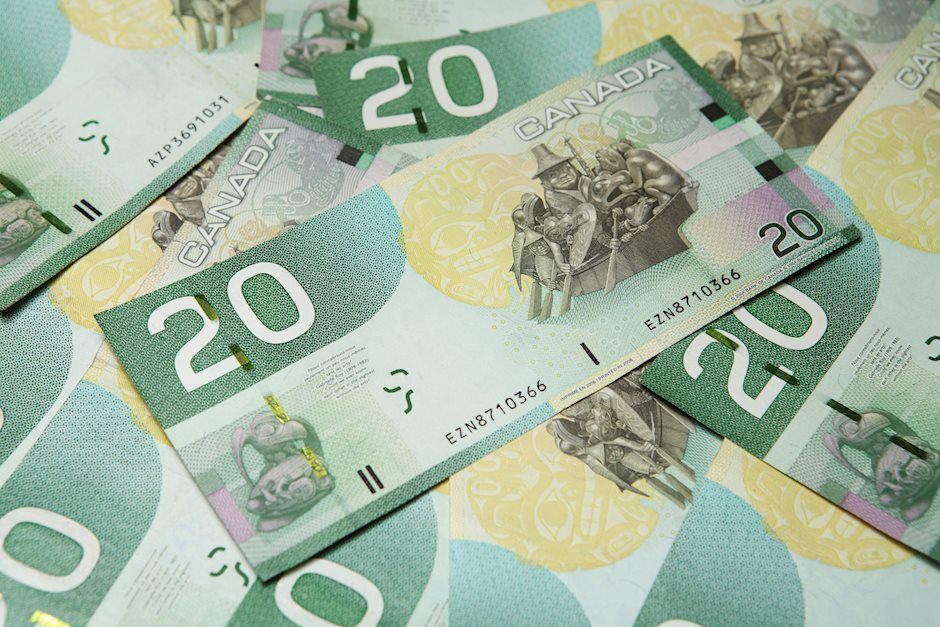USD/CAD depreciates to near 1.4400 as improved Oil prices support the Canadian Dollar
- USD/CAD faced a minor challenge of improved crude Oil prices.
- Oil prices are set for weekly gains as reports suggest that European energy firms focus on Oil rather than renewables.
- The Canadian Dollar may struggle due to rising expectations of the BoC easing rates to support growth.

USD/CAD remains tepid following two days of gains, trading around 1.4410 during the Asian hours on Friday. The USD/CAD pair holds minor losses as the Canadian Dollar (CAD) gains ground due to improved crude Oil prices, given Canada is the largest Oil exporter to the United States (US).
West Texas Intermediate (WTI) Oil price gains ground, trading around $69.50 per barrel at the time of writing. Crude Oil prices are being bolstered by reports that major European energy companies are focusing on Oil and gas rather than renewables for short-term profits, a trend expected to continue into 2025.
Canada's GDP likely contracted by 0.1% month-over-month in November, marking the first monthly decline of the year and reflecting the central bank's recent warnings and downgraded growth projections. The government also revised its GDP forecasts downward, lowering 2025 growth to 1.7% from 1.9% and 2026 to 2.1% from 2.2%. Rising expectations that the Bank of Canada (BoC) may further ease rates to support growth could widen the interest rate gap with the US, diminishing the CAD’s attractiveness.
The downside of the USD/CAD pair could be limited as the US Dollar (USD) gains ground due to growing expectations of fewer rate cuts by the US Federal Reserve (Fed). In its December meeting, the Fed reduced interest rates by a quarter point and revised its 2025 projection to include only two rate cuts, down from the previously forecasted four.
The US Dollar Index (DXY), which measures the value of the US Dollar (USD) against its six major peers, trades above 108.00, slightly below its highest level since November 2022. However, the upside of the Greenback could be restrained as 2-year and 10-year yields on US Treasury bonds remain subdued at 4.32% and 4.57%, respectively, at the time of writing.
Canadian Dollar FAQs
The key factors driving the Canadian Dollar (CAD) are the level of interest rates set by the Bank of Canada (BoC), the price of Oil, Canada’s largest export, the health of its economy, inflation and the Trade Balance, which is the difference between the value of Canada’s exports versus its imports. Other factors include market sentiment – whether investors are taking on more risky assets (risk-on) or seeking safe-havens (risk-off) – with risk-on being CAD-positive. As its largest trading partner, the health of the US economy is also a key factor influencing the Canadian Dollar.
The Bank of Canada (BoC) has a significant influence on the Canadian Dollar by setting the level of interest rates that banks can lend to one another. This influences the level of interest rates for everyone. The main goal of the BoC is to maintain inflation at 1-3% by adjusting interest rates up or down. Relatively higher interest rates tend to be positive for the CAD. The Bank of Canada can also use quantitative easing and tightening to influence credit conditions, with the former CAD-negative and the latter CAD-positive.
The price of Oil is a key factor impacting the value of the Canadian Dollar. Petroleum is Canada’s biggest export, so Oil price tends to have an immediate impact on the CAD value. Generally, if Oil price rises CAD also goes up, as aggregate demand for the currency increases. The opposite is the case if the price of Oil falls. Higher Oil prices also tend to result in a greater likelihood of a positive Trade Balance, which is also supportive of the CAD.
While inflation had always traditionally been thought of as a negative factor for a currency since it lowers the value of money, the opposite has actually been the case in modern times with the relaxation of cross-border capital controls. Higher inflation tends to lead central banks to put up interest rates which attracts more capital inflows from global investors seeking a lucrative place to keep their money. This increases demand for the local currency, which in Canada’s case is the Canadian Dollar.
Macroeconomic data releases gauge the health of the economy and can have an impact on the Canadian Dollar. Indicators such as GDP, Manufacturing and Services PMIs, employment, and consumer sentiment surveys can all influence the direction of the CAD. A strong economy is good for the Canadian Dollar. Not only does it attract more foreign investment but it may encourage the Bank of Canada to put up interest rates, leading to a stronger currency. If economic data is weak, however, the CAD is likely to fall.
Author

Akhtar Faruqui
FXStreet
Akhtar Faruqui is a Forex Analyst based in New Delhi, India. With a keen eye for market trends and a passion for dissecting complex financial dynamics, he is dedicated to delivering accurate and insightful Forex news and analysis.

















